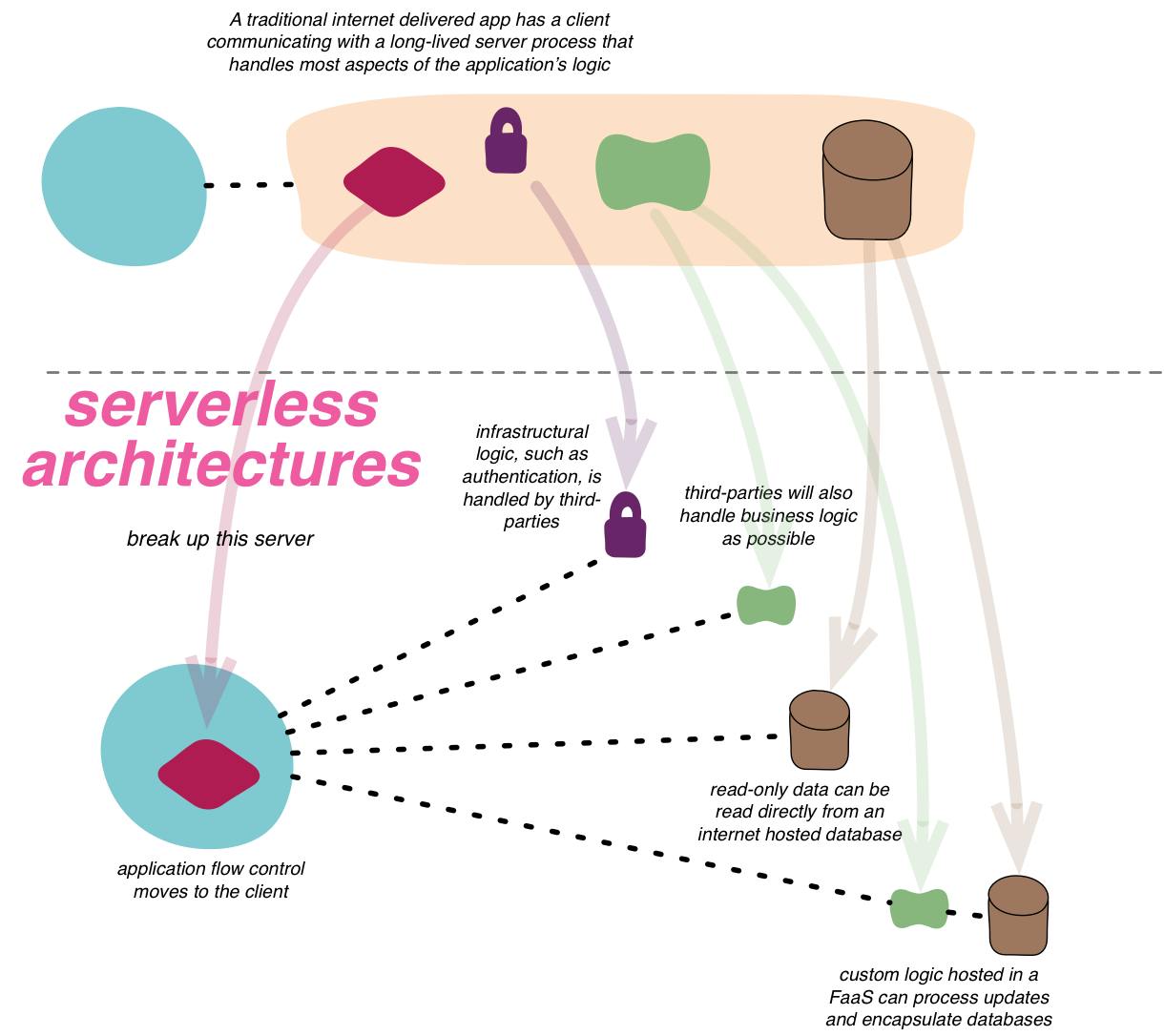What is serverless?
In a cloud-based, on-demand execution approach known as serverless computing, clients only use resources in accordance with the needs of the applications they are using. Serverless computing offers the option to purchase only the CPU cycles and memory required to operate an application using an event-based pay-per-use approach, in contrast to a standard virtual machine-model where users must build and manage a whole VM. This gives teams the flexibility to scale quickly and effectively while avoiding a lot of the costs and time involved in managing hardware, platforms, and operating systems on-premises.

These serverless applications and serverless architecture are defined by a few inherent characteristics. These are what they are:
Hostless: Making use of a serverless architecture implies that communication with servers is no longer necessary. Additionally, because there are no servers to use, there is a vastly reduced operational burden on their upkeep.
Stateless: Stateless programmes build their state at the beginning of the execution and destroy it after the function has been properly completed. Regarding these functions, no state information is automatically stored. Users can use a separate storage system, such as a database, if they need to keep track of state data.
Simple to use: This describes how simple it is to get one's code running in a serverless architecture. Learning to utilise serverless has very few prerequisites. As a result, there is a very low expertise required to work in this industry.
Why do you need serverless?
Pay per use
Because you only pay for what you use, your code will only execute when the serverless application needs the backend infrastructure. This payment structure is comparable to that of utility companies. For instance, you just pay for the electricity you use. You only pay for the computing resources you really use in this cloud scenario. As a result, you save money overall by not having to buy server capacity that you might not use.
Low latency
You don't need to host an application on an origin server with serverless because the application code can be launched from any location. The majority of cloud providers distribute your code across numerous servers and enable it to run on the servers closest to the end user. Since the user requests are simply handled by the closest server, this also lowers latency.
FaaS
You can create apps using the function-as-a-service (FaaS) model with serverless technology. FaaS is a serverless method of running particular server-side logic or functions in a cloud environment. Each function must be compact and do only one single task. This paradigm's benefit is that while deploying an application, there is no requirement for server configuration. Since the backend infrastructure doesn't need to be created or maintained, you can concentrate on writing your function code.
The following are some of the most well-liked FaaS services provided by cloud providers:
Azure Function (Microsoft) Lambda on AWS (AWS- Amazon Web Services) Cloud Function by Google (Google)
Dynamic scalability
Applications that use serverless technology offer extremely scalable infrastructure. Provisioning is rapid and dynamic, scaling up and down automatically as necessary. Long-term expenditures are decreased as a result, and the accessibility and dependability of your services are enhanced. You'll always have the appropriate quantity of infrastructure to match your demand thanks to the increased availability.
Limitations
Third-party dependency
Being dependent on your provider is a requirement of serverless architecture. You don't have complete control, and changes might have an unanticipated effect on you. The platform's terms govern its accessibility.
Debugging
There is no local environment available to test and debug code in the development stage because everything is running in the cloud. For the developers that lack expertise and have poor skills, this becomes a challenge.
Conclusion:
This type of architecture shortens the time it takes to get a product into production and lowers the cost of maintaining unused virtual machines or on-premises infrastructure. Numerous technologies are now available from vendors to assist you save money on hardware, but frequently at the expense of observability.
Serverless can excel only when utilized appropriately because it is not a fix-all technology.
